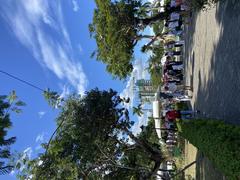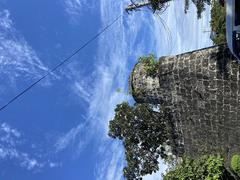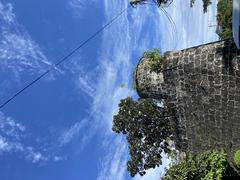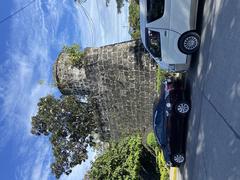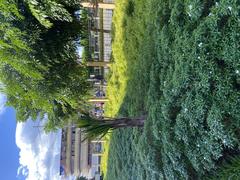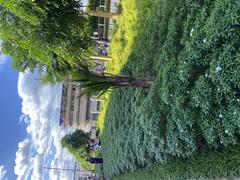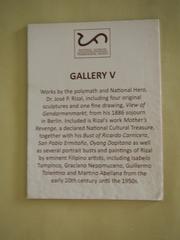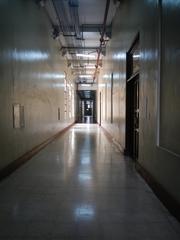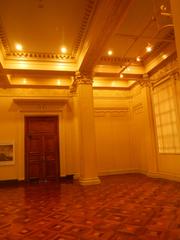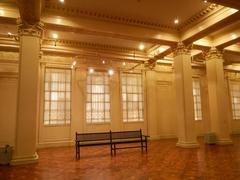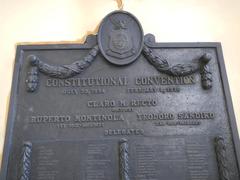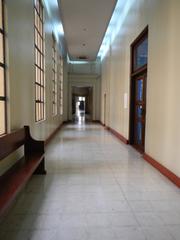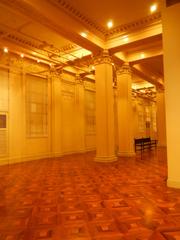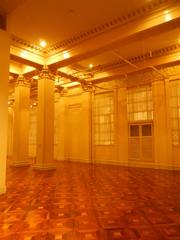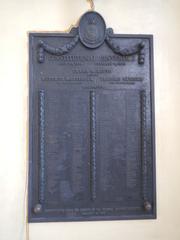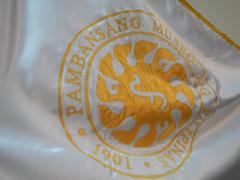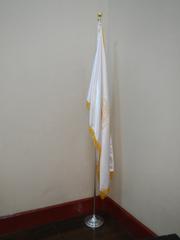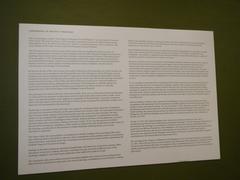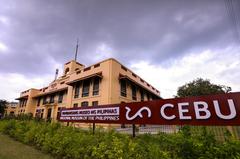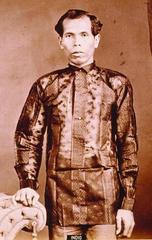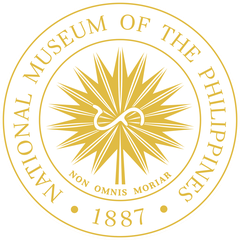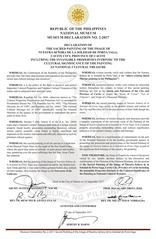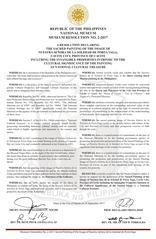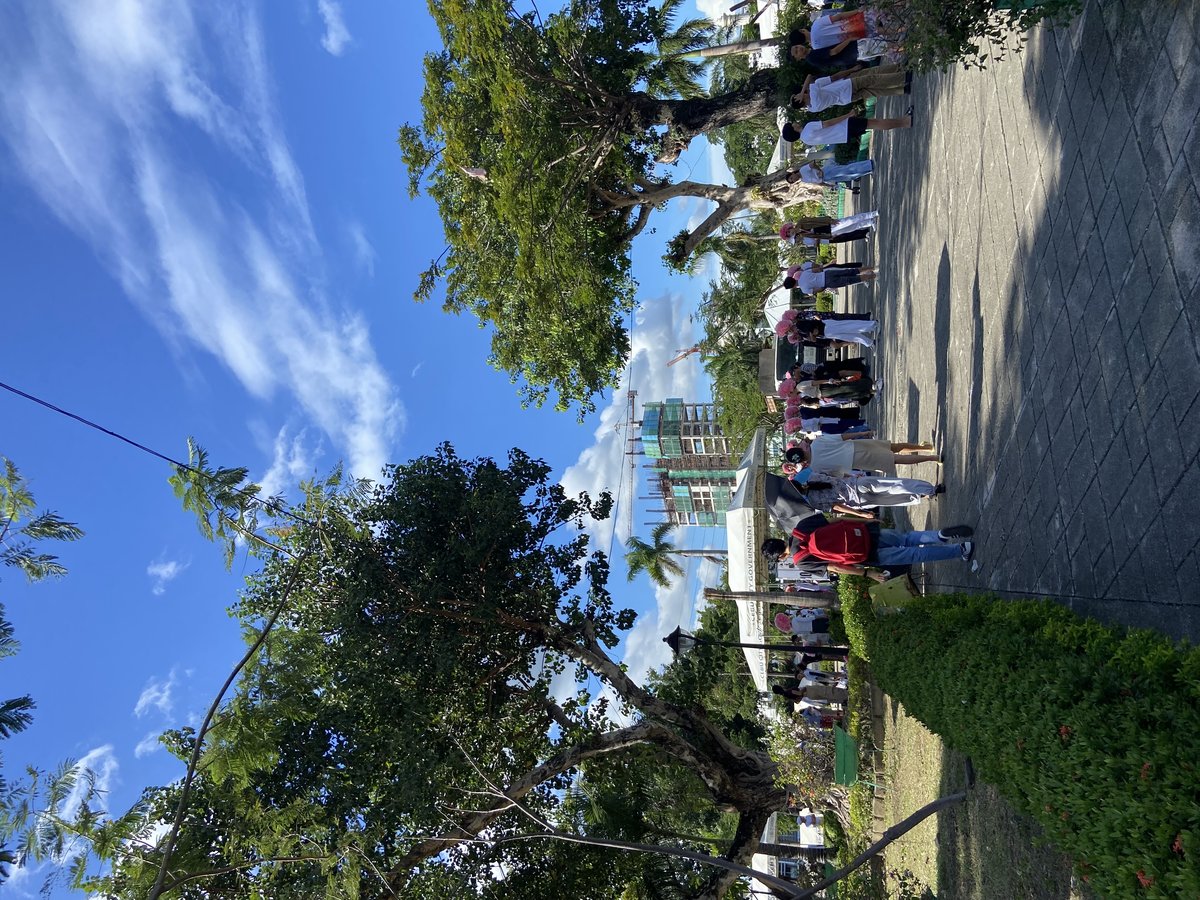
National Museum of the Philippines: Visiting Hours, Tickets, and Historical Sites in Metro Manila
Date: 14/06/2025
Introduction
The National Museum of the Philippines stands as a vibrant symbol of Filipino heritage, located in the heart of Metro Manila. Comprising three main institutions—the National Museum of Fine Arts, the National Museum of Anthropology, and the National Museum of Natural History—this complex offers visitors a deep dive into the country’s artistic achievements, rich history, and extraordinary biodiversity. Whether you are a local, a tourist, a student, or a family, the museum complex provides something for everyone, from iconic masterpieces like Juan Luna’s “Spoliarium” to the ancient Manunggul Jar and the awe-inspiring Tree of Life atrium.
This comprehensive guide covers everything you need to know for a seamless and enriching visit: museum history, visiting hours, admission policies, accessibility, highlights, educational programs, travel tips, and nearby attractions. Enjoy your journey into the heart of Filipino identity and culture.
Table of Contents
- Introduction
- History and Evolution
- Visiting Hours & Free Admission
- Getting There & Accessibility
- Must-See Highlights
- Programs, Tours, and Digital Experiences
- Nearby Attractions
- FAQs
- Planning Your Visit
- Summary & Recommendations
- References
History and Evolution of the National Museum
The roots of the National Museum date back to 1887, with the establishment of the Museo-Biblioteca de Filipinas by the Spanish colonial government. This early institution aimed to safeguard the archipelago’s cultural and literary treasures (mytourguide.ph). Under American rule, the museum took on new dimensions, officially becoming the Insular Museum of Ethnology, Natural History, and Commerce in 1901 (travelsetu.com). Over decades of transformation, the museum found its permanent home in Rizal Park, Manila, utilizing historic neoclassical buildings such as the Old Congress Building and the former Department of Finance.
Today, the National Museum Complex consists of three major institutions, each occupying architecturally significant buildings repurposed to display the country’s finest collections (pia.gov.ph).
Visiting Hours & Free Admission
As of January 1, 2025, the National Museum Complex and all its regional museums are open seven days a week, from 9:00 a.m. to 6:00 p.m. (last entry at 5:30 p.m.), including Mondays (philstar.com). Admission is free for all visitors; no tickets or reservations are required for individuals and families (Good News Pilipinas). The museums only close for certain religious holidays.
For groups interested in guided tours, advance reservations are recommended via [email protected] (Spot.ph).
Getting There & Accessibility
The National Museum Complex is centrally located in Manila, adjacent to Rizal Park and within walking distance to Intramuros, Fort Santiago, and other historical landmarks. Access is easy via public transport:
- LRT-1: United Nations Avenue Station is a short walk away
- Jeepneys/Buses: Main routes pass along Taft and Padre Burgos Avenues
- Taxis and Ride-hailing Apps: Widely available in Metro Manila
Limited parking is available, but public transportation is recommended due to traffic and parking constraints (onlooq.com).
The museums are fully wheelchair accessible, equipped with ramps, elevators, and rest areas. Family-friendly facilities include accessible restrooms and baggage counters. All signage and most exhibit descriptions are in both Filipino and English, ensuring accessibility for international visitors.
Must-See Highlights
National Museum of Fine Arts
- Spoliarium by Juan Luna: The museum’s iconic centerpiece, this monumental painting symbolizes the Filipino struggle during colonial times (Plan and Explore).
- Works by Félix Resurrección Hidalgo: Paintings such as “La Barca de Aqueronte” highlight the evolution of Filipino art.
- Hall of Masters: Features masterpieces by National Artists including Amorsolo, Tolentino, and Manansala.
- Sculptures and Decorative Arts: Includes the renowned “Oblation” and historically significant artifacts.
Over 29 galleries trace Philippine art’s journey from the Spanish colonial period to the present (TripHobo).
National Museum of Anthropology
- San Diego Shipwreck Collection: Artifacts from a 1600s Spanish galleon, illuminating the Manila-Acapulco Galleon Trade.
- Manunggul Jar: An ancient burial jar dating back to 890–710 BCE.
- Pre-colonial Gold and Burial Artifacts: Includes jewelry and ritual objects that demonstrate early Filipino craftsmanship.
- Ethnographic Galleries: Showcases traditional textiles, instruments, and cultural items from indigenous groups.
- Baybayin and Ancient Scripts: Interactive stations introduce ancient Philippine writing systems.
National Museum of Natural History
- Tree of Life Atrium: A DNA-inspired glass and steel structure at the heart of the museum, symbolizing the interconnectedness of life (The Poor Traveler).
- Lolong, the World’s Largest Crocodile in Captivity: Taxidermied remains highlight conservation efforts.
- Biodiversity and Ecosystem Galleries: Permanent exhibits showcase the Philippine eagle, tarsier, tamaraw, and marine life such as the giant blue whale skeleton.
- Geology and Paleontology: Features volcanic rocks, minerals, and fossil replicas.
- Interactive Educational Exhibits: Family-friendly, with hands-on learning opportunities.
Programs, Tours, and Digital Experiences
The museum offers free guided tours for groups (up to 35 people), workshops, and cultural events (mytourguide.ph). Digital resources such as virtual tours and augmented reality exhibits are available on the official website and through apps, making the collections accessible to remote visitors (travelsetu.com).
Nearby Attractions
Enhance your visit by exploring these iconic sites within walking distance:
- Rizal Park (Luneta): Manila’s historic urban park.
- Intramuros: The famed walled city, with centuries-old fortifications and churches.
- Fort Santiago: A fortress rich in Philippine history.
- San Agustin Church, Manila Cathedral, and Binondo (Chinatown).
- Manila Ocean Park: For families seeking more interactive experiences.
There are various restaurants, cafes, and convenience stores nearby for refreshments (Travel Setu).
Frequently Asked Questions (FAQs)
What are the visiting hours?
The National Museum is open daily, 9:00 a.m. to 6:00 p.m. (last entry at 5:30 p.m.).
Is admission free?
Yes, admission is free for all visitors.
Are guided tours available?
Free guided tours are available for groups by advance reservation.
Is the museum accessible for people with disabilities?
Yes, all museums are wheelchair accessible with ramps and elevators.
Can I take photos?
Non-flash photography is allowed in most areas. Selfie sticks, tripods, and video recording may be restricted.
Are food and drinks allowed?
No, food and drinks are not allowed inside the galleries. Bags and umbrellas must be deposited at the baggage counter.
How should I dress?
There’s no strict dress code, but respectful attire is encouraged.
Planning Your Visit
- Start early: Weekday mornings are quietest.
- Bring ID: Required for entry.
- Travel light: Bags must be checked at the entrance.
- Allocate time: Plan at least 1–2 hours per museum.
- Use public transport: Parking is limited.
- Consider the Audiala app: For interactive maps, guides, and updates on exhibitions.
Summary & Recommendations
The National Museum of the Philippines is a cornerstone of Filipino identity, offering visitors insight into the nation’s art, history, and natural wonders. With extended daily hours, free admission, and comprehensive accessibility, it caters to a wide array of interests and ages. Its central location, proximity to major Manila historical sites, and robust educational programs ensure a rewarding experience. For the best visit, plan ahead, take advantage of guided tours, and immerse yourself in the museum’s vibrant stories and collections.
References and Further Reading
- Discover the National Museum of the Philippines: Your Complete Visitor’s Guide, 2025, mytourguide.ph
- National Museum of the Philippines Tourism History, travelsetu.com
- National Museum Now Open Every Day Starting 2025, pia.gov.ph
- National Museums Now Open Daily Starting 2025, philstar.com
- National Museum of the Philippines Visiting Hours, Tickets, and Guide to Manila’s Historical Sites, traveling-up.com
- Visiting the National Museum Complex in Manila: Hours, Tickets & Highlights, mytourguide.ph
- Complete Visitor Guide to the National Museum of Fine Arts Manila, planandexplore.com
- National Museum of the Philippines Official Website
Alt text for images to be included:
- “Facade of the National Museum of the Philippines in Manila”
- “The Spoliarium painting by Juan Luna displayed at the National Museum”
- “Visitors exploring the National Museum of Fine Arts gallery”
Embedded media suggestions:
- Interactive map of the National Museum Complex
- Virtual tour link from the official museum website
Internal links (to be added if applicable):
- Articles on Manila historical sites
- Guides on Philippine cultural heritage and museums

